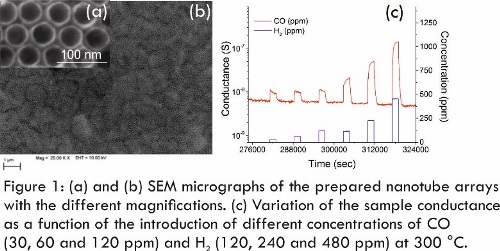
Vardan Galstyan
University of Brescia, Italy
Title: Electrochemical surface modification of metal oxides for security applications and healthcare
Biography
Biography: Vardan Galstyan
Abstract
Statement of the Problem: Chemical sensors have received great attention for the fabrication of small-size and mobile gas sensing devices for the environmental monitoring and clinical diagnostic.1,2 One-dimensional metal oxide nanomaterials are very promising structures for the application in chemical gas sensing.3,4 However, the sensing performance of these materials needs to be improved for the manufacturing of sensing systems with the high sensitivity, selectivity and stability.5 Herein, we report the synthesis of highly ordered titania nanotubes and the modification of their structure and surface for the chemical sensing applications. Methodology & Theoretical Orientation: Well-ordered titania nanotube arrays were prepared by electrochemical anodization. The anodization process was performed in the electrochemical cell with the two-electrode system. Preparation of titania nanotubes by means of electrochemical anodization is anodic formation of nanotubes by oxidation and etching of metallic titanium films. Pt foil was used as a counter electrode. The anodization was carried out by potentiostatic mode at room temperature. This method allows direct growth of the titania nanotubes on different type of substrates and the modification of their surface structure at room temperature. The morphological, structural and elemental analysis of the obtained samples were performed. The sensing properties of the materials were tested towards different, explosive and toxic gases. Findings: Pure and doped nanotubes have been obtained by the modification of anodization parameters. Our studies have shown that the engineering of the band gap and the functionalization of the surface structure of titania enhanced its gas sensing performance. Conclusion & Significance: Investigations have shown that the response and the selectivity of titania nanotubes are improving depending on the modification of their composition and their functionalization. Meanwhile, the developed method is promising for the fabrication of high performance and small size chemical gas sensors.


